Scientists Investigate Mysterious Coral Mortality Event at East Flower Garden Bank
August 9, 2016
Several potential causes of the outbreak are under investigation, but it's most likely a combination of stressors at work.
Video of mass mortality event. View video description. HD Version
0:00 - The brown coral on the left is healthy star coral. The two faded colors on the same coral (below center) are dying or dead coral, and you can see the tissue sloughing off. We don't know whether the white mat caused the stress that killed the coral polyps. In this picture, it would appear not, unless a noxious chemical like hydrogen sulfide is coming from the mat or the sponge beneath it. Some think that there may be a mass mortality of sponges associated with this event. If the sponges are now rotting away, forming hydrogen sulfide, that could promote the growth of the bacteria that may be forming that mat (it could be a genus called Beggiatoa, a sulfide oxidizing bacteria), but we are still investigating this idea.
0:21 - A dead brittle star lying among filamentous algae on the reef.
0:28 - A white mat that could be bacteria growing over a sponge and peeling off in places.
0:41 - A white mat that could be bacteria growing over another sponge and peeling off in places.
0:55 - Though the lower portion of this massive star coral appears to be bleached from a distance, it has actually lost its tissue. The camera is looking down into a sand-filled depression on the reef.
1:02 - A brain coral that has lost tissue next to a healthy star coral.
1:05 - This is an area with a high number of brain and star coral colonies that have lost tissue.
Although the reefs of Flower Garden Banks National Marine Sanctuary (FGBNMS) are normally considered the healthiest in the region, on July 25, sport divers on the M/V FLING, reported green, hazy water, huge patches of ugly white mats on corals and sponges, and dead animals littering the bottom at East Flower Garden Bank, buoy #4.
360 degree video at a survey site at East Flower Banks buoy #4 showing approximately 20% mortality of the coral cover. Credit: FGBNMS/Johnston. HD Version
The charter captain immediately notified FGBNMS and BOEM (Bureau of Ocean Energy Management) researchers, who were just a few hundred yards away, conducting long-term monitoring efforts at buoy #2. The FGBNMS team responded quickly to the reports and was able to conduct several benthic and fish surveys, and collect some samples in the area before heading back to shore.
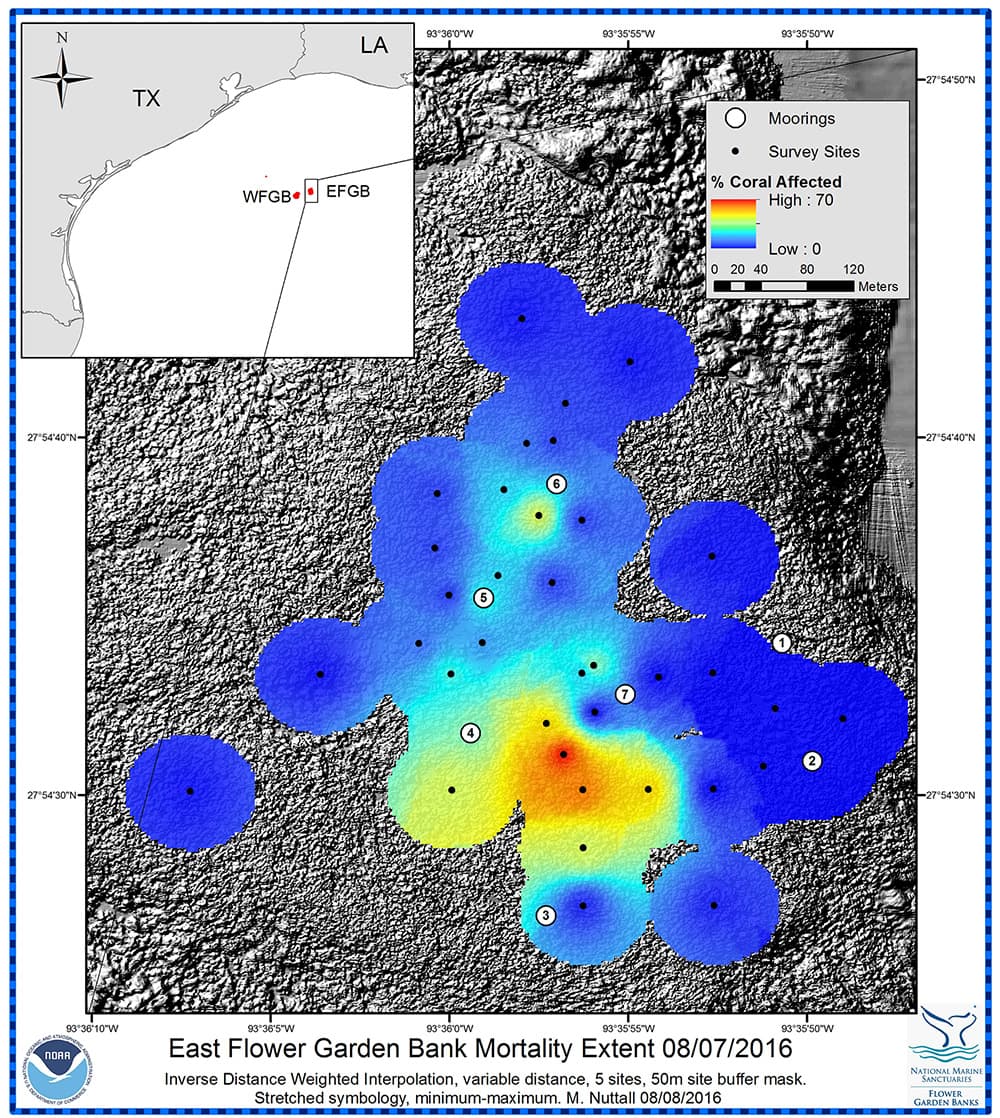
Several potential causes of the outbreak are under investigation, but it's most likely a combination of stressors at work. Scientists from around the world are offering advice and assistance in trying to help discover the cause.
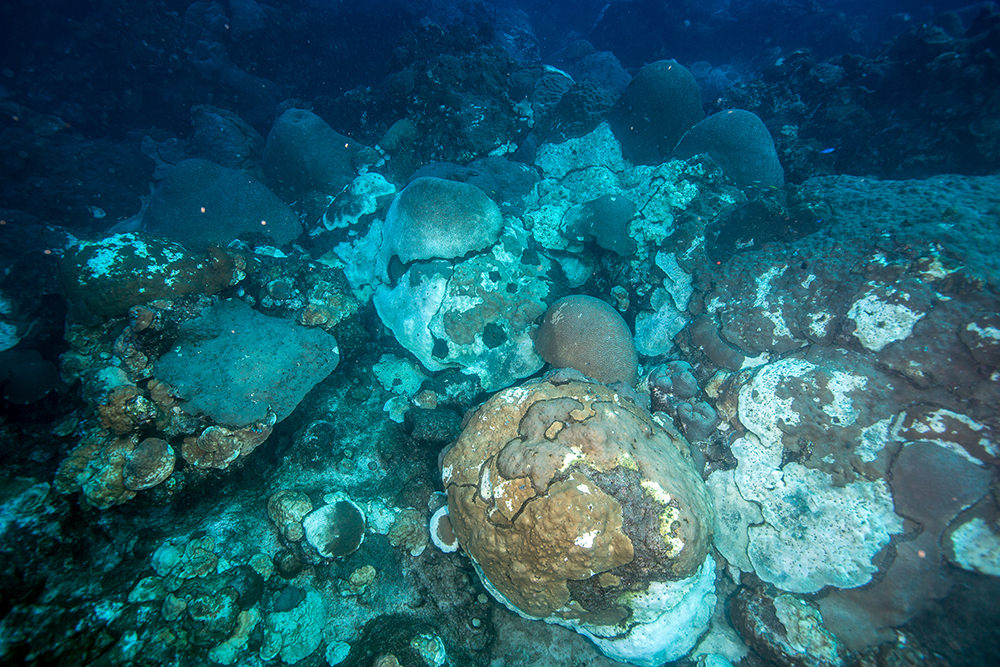
An initial response cruise was launched with Texas A&M University (TAMU), July 30-August 2, to collect water samples for water chemistry sampling.
A second response cruise, led by FGBNMS, with partners from Rice University, UNCW-Chapel Hill and TAMU, took place August 4-7. Researchers conducted photo transects and scooter surveys, and collected over 300 samples of corals and sponges, both affected and unaffected, as well as directed water samples in specific areas of the impacted reef. These samples will be analyzed to look at the micro-organism communities and also genetic markers that may indicate specific types of stress. TAMU also deployed a glider that will be running transects throughout the area to continue characterization of the water column.
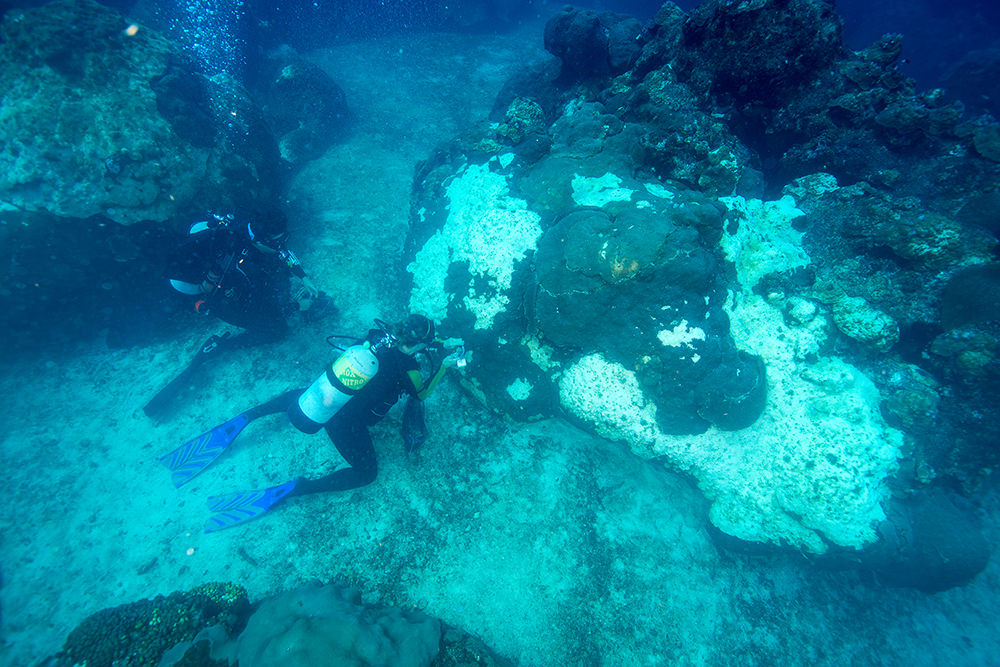
Based on surveys so far, about 6.3% of the corals located in the shallower (< 90 feet) portions of the reef cap on East Flower Garden Bank were affected by the mortality event. These affected corals are spread across 6.5 acres, with some locations exhibiting up to 70% mortality. This could mean several thousand dead coral colonies and untold numbers of associated reef invertebrates including sponges, brittle stars, sea urchins, crabs, worms and shrimp. Many of the dead coral colonies are tens of hundreds of years old.
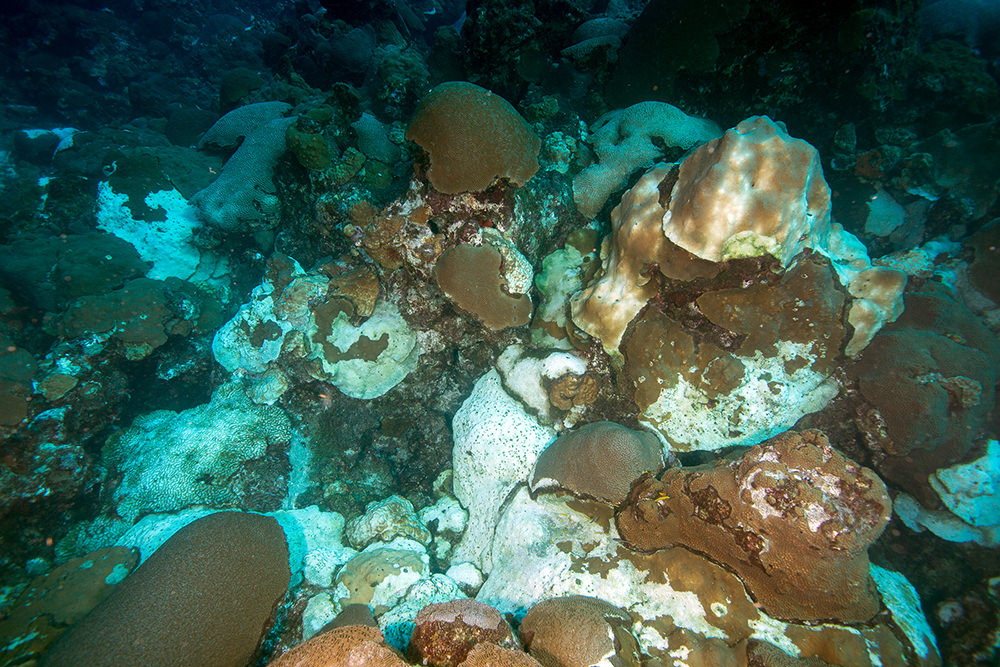
Although it is still unclear what caused the coral and organism mortality, researchers think the event may no longer be active, except for some discrete areas.
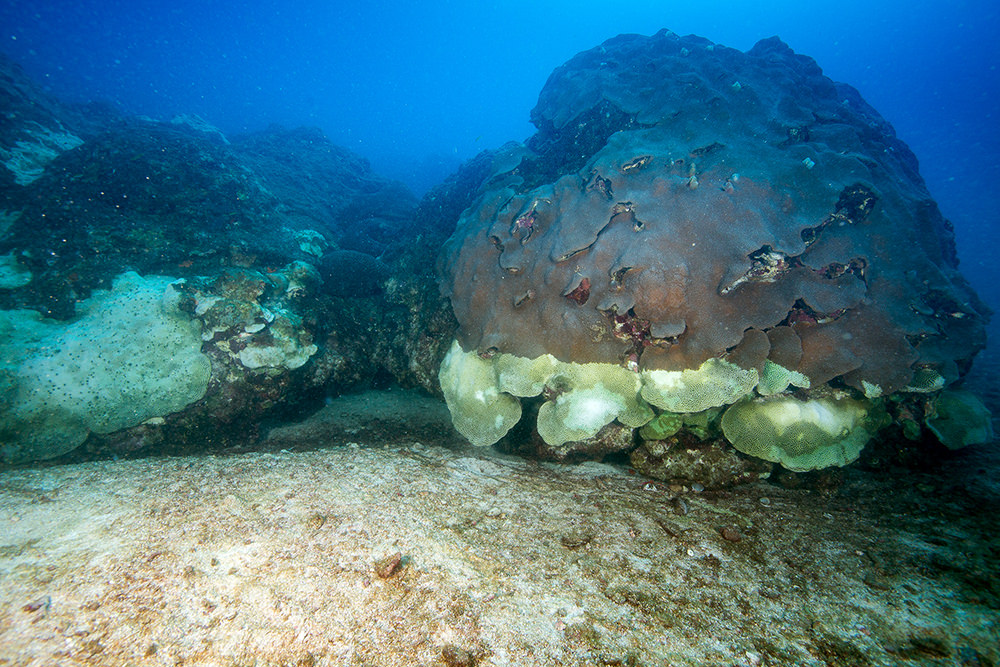
Sanctuary scientists will continue monitoring the area to document recovery over time. Observations will take place more frequently in the short term, followed by annual surveys. Scientists will also be on the look-out for possible indications of additional mortality or coral disease.
Meanwhile, sanctuary managers continue to request that divers and fishers avoid the impacted areas to allow the reef time to heal and to limit the possibility of transferring whatever caused the die-off to healthy areas.
Initial Report, July 2016
Investigation Continues, September 2016
For more information, contact Marissa.Nuttall@noaa.gov or Steve.Gittings@noaa.gov
UPDATE: In February 2018, the sanctuary co-hosted a mini-symposium, bringing together 40 researchers from different disciplines to discuss possible causes of the mortality event. The report below summarizes their findings.
Mini-Symposium Report, February 2018

